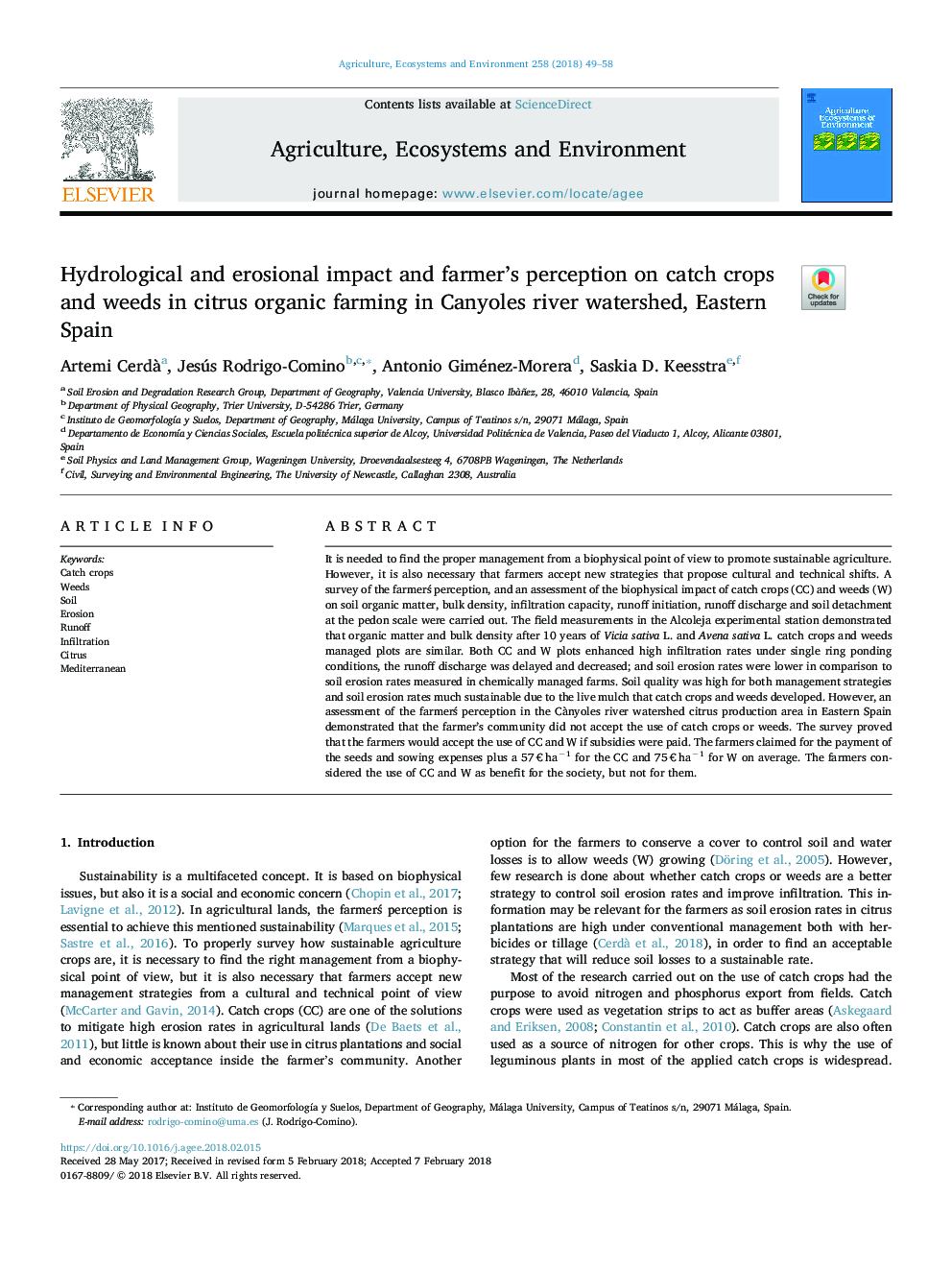| Article ID | Journal | Published Year | Pages | File Type |
|---|---|---|---|---|
| 8487115 | Agriculture, Ecosystems & Environment | 2018 | 10 Pages |
Abstract
It is needed to find the proper management from a biophysical point of view to promote sustainable agriculture. However, it is also necessary that farmers accept new strategies that propose cultural and technical shifts. A survey of the farmerÅ perception, and an assessment of the biophysical impact of catch crops (CC) and weeds (W) on soil organic matter, bulk density, infiltration capacity, runoff initiation, runoff discharge and soil detachment at the pedon scale were carried out. The field measurements in the Alcoleja experimental station demonstrated that organic matter and bulk density after 10 years of Vicia sativa L. and Avena sativa L. catch crops and weeds managed plots are similar. Both CC and W plots enhanced high infiltration rates under single ring ponding conditions, the runoff discharge was delayed and decreased; and soil erosion rates were lower in comparison to soil erosion rates measured in chemically managed farms. Soil quality was high for both management strategies and soil erosion rates much sustainable due to the live mulch that catch crops and weeds developed. However, an assessment of the farmerÅ perception in the Cà nyoles river watershed citrus production area in Eastern Spain demonstrated that the farmer's community did not accept the use of catch crops or weeds. The survey proved that the farmers would accept the use of CC and W if subsidies were paid. The farmers claimed for the payment of the seeds and sowing expenses plus a 57â¯â¬â¯haâ1 for the CC and 75â¯â¬â¯haâ1 for W on average. The farmers considered the use of CC and W as benefit for the society, but not for them.
Related Topics
Life Sciences
Agricultural and Biological Sciences
Agronomy and Crop Science
Authors
Artemi Cerdà , Jesús Rodrigo-Comino, Antonio Giménez-Morera, Saskia D. Keesstra,
